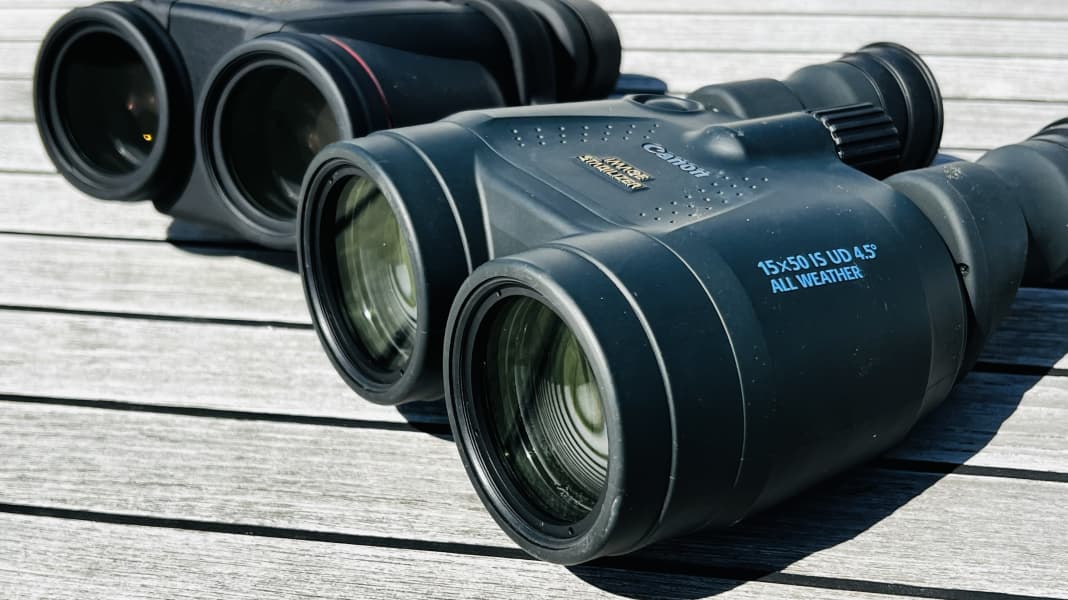
Binoculars for on-board use have a magnification of seven times and the diameter of the entrance pupil is 50 millimetres. In short: 7x50. That's it, that's it. The reasons are to be found in on-board practice: in rough seas, a sevenfold magnification can just about be held steady by hand without the image blurring too much. And the 50 mm diameter ensures a clear and bright image with a handy size and acceptable weight.
Binoculars with microprocessor
Since the advent of microelectronics in binoculars, however, the limits of what is technically feasible have shifted. Modern binoculars, such as the Canon 10x42L iS and the larger 15x50 IS All Weather that we tested, work with a so-called image stabiliser, which also allows higher magnification values. Technically speaking, an acceleration sensor recognises movement. The detected movement information is then passed on to a microprocessor, which processes the information and makes the necessary adjustments to stabilise the image. The image stabiliser in the Canon lenses works with the so-called "Vari-Angle Prism System". This uses sensors that recognise the smallest movements such as hand tremors. These movements are then passed on to microprocessors which immediately adjust the position of moving prisms within the binoculars.

Technology prevents tremors
The shifting of the prisms corrects the light paths and thus stabilises the image. The result is a more stable, less blurred image in the binoculars. In our practical test on the Elbe, both models were able to perfectly compensate for moderate boat movements and, above all, the annoying "shaking". In practice, it was possible to clearly identify the next buoy, the light signals at locks or harbour entrances at a distance of 300 or 400 metres rather than 200 metres. However, anyone who believes that any boat movement can be eliminated by processor assistance is mistaken. It should be emphasised that the 15x50 binoculars in particular offer a magnification that would be impractical without electronic stabilisation.
With weights of 1.1 kilograms (10x42) and 1.2 kilograms (15x50), both binoculars are not among the lightest in their class. The field of view at a distance of 1000 metres is naturally greater with the 10x42 at around 114 metres than with the 15x50 at 79 metres. Both binoculars are focused via a centre drive that can be operated precisely. While the 10x42 binoculars are classed as "waterproof" by Canon, the 15x50 are only protected against rain and splash water.
Binoculars in two versions
We did not like the unsecured lens caps and eyepiece caps that were too loose. The unusual design due to the complex technology fits well in the hand, but should be held with both hands. The prices of the Canon lenses are between 1100 and 1300 euros, depending on the source of supply.
Conclusion: With the Image Stabiliser models 10x42 L IS and 15x50 IS, Canon brings two high-tech binoculars to the boat that are unrivalled and represent a great improvement in use on board. Like any electronic device, they will of course only work for as long as the batteries last. The manufacturer claims up to eight hours of use. Spare batteries for the binoculars should therefore always be on board.
